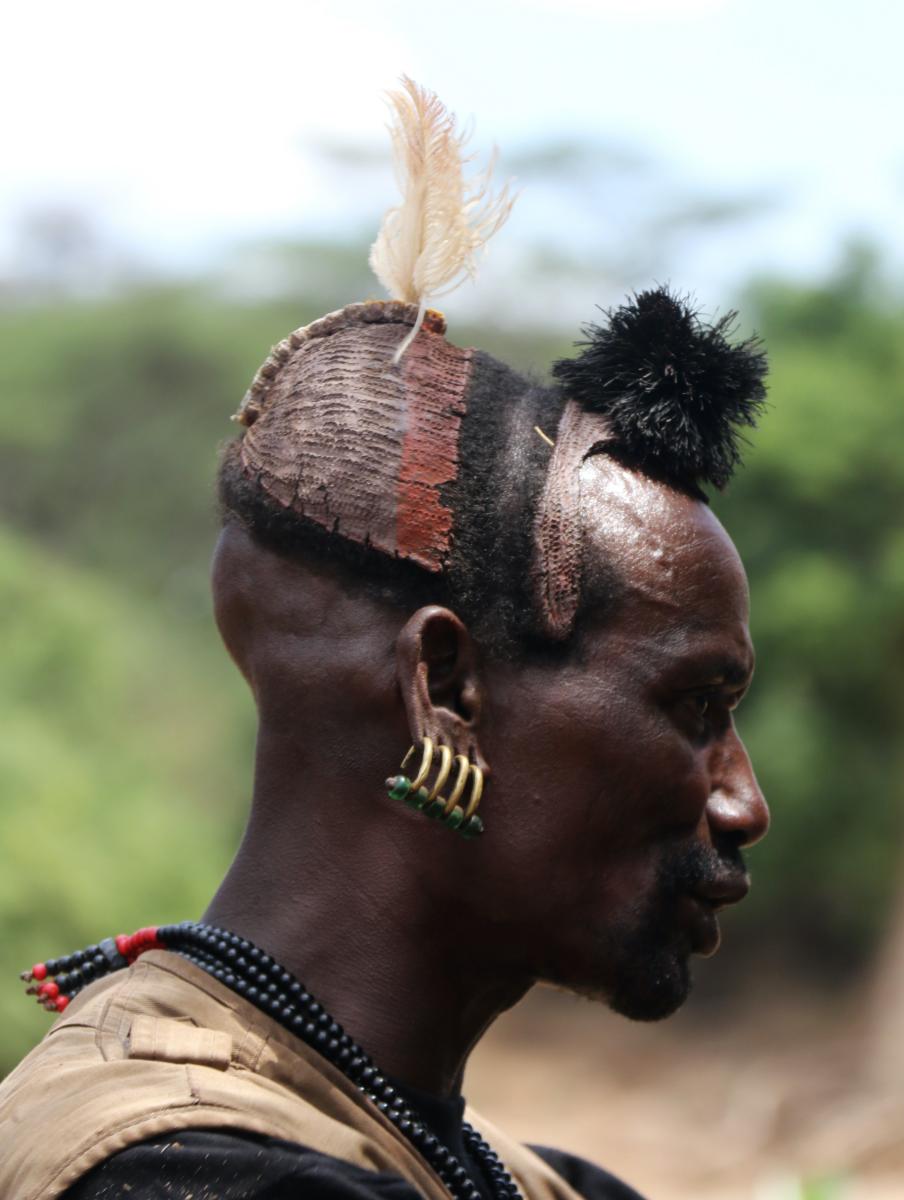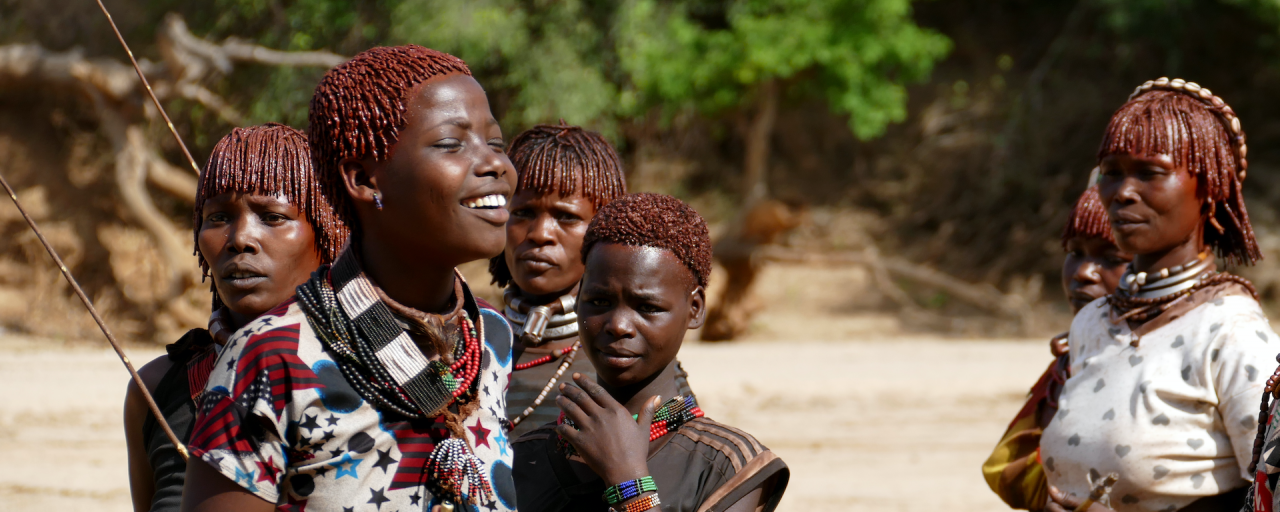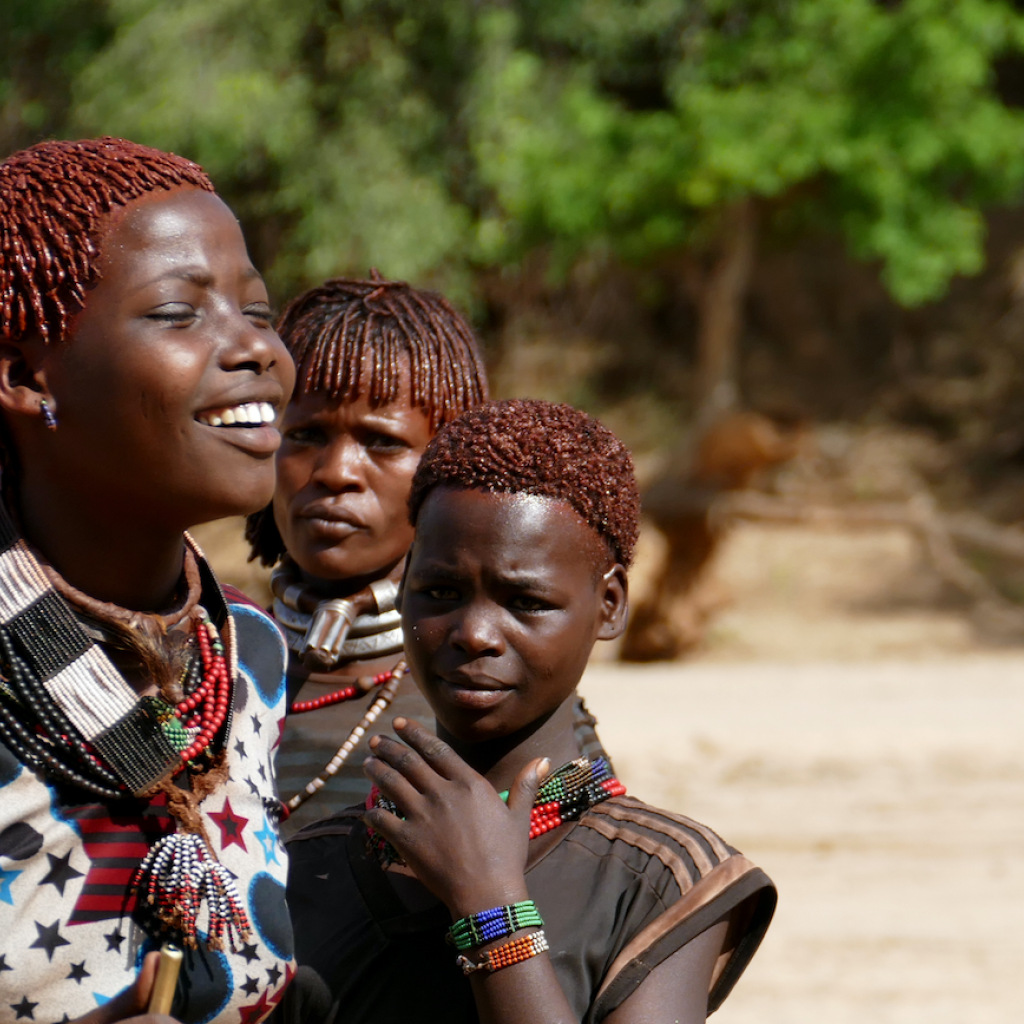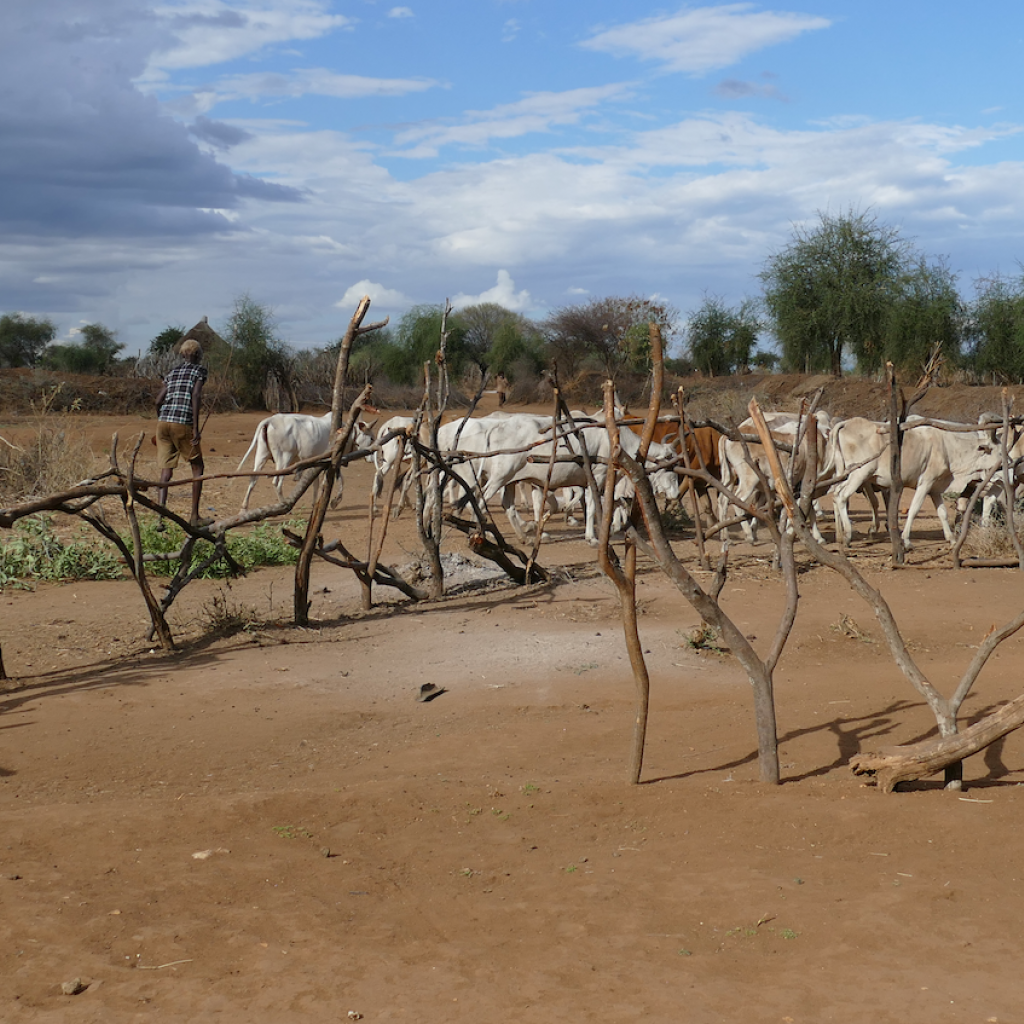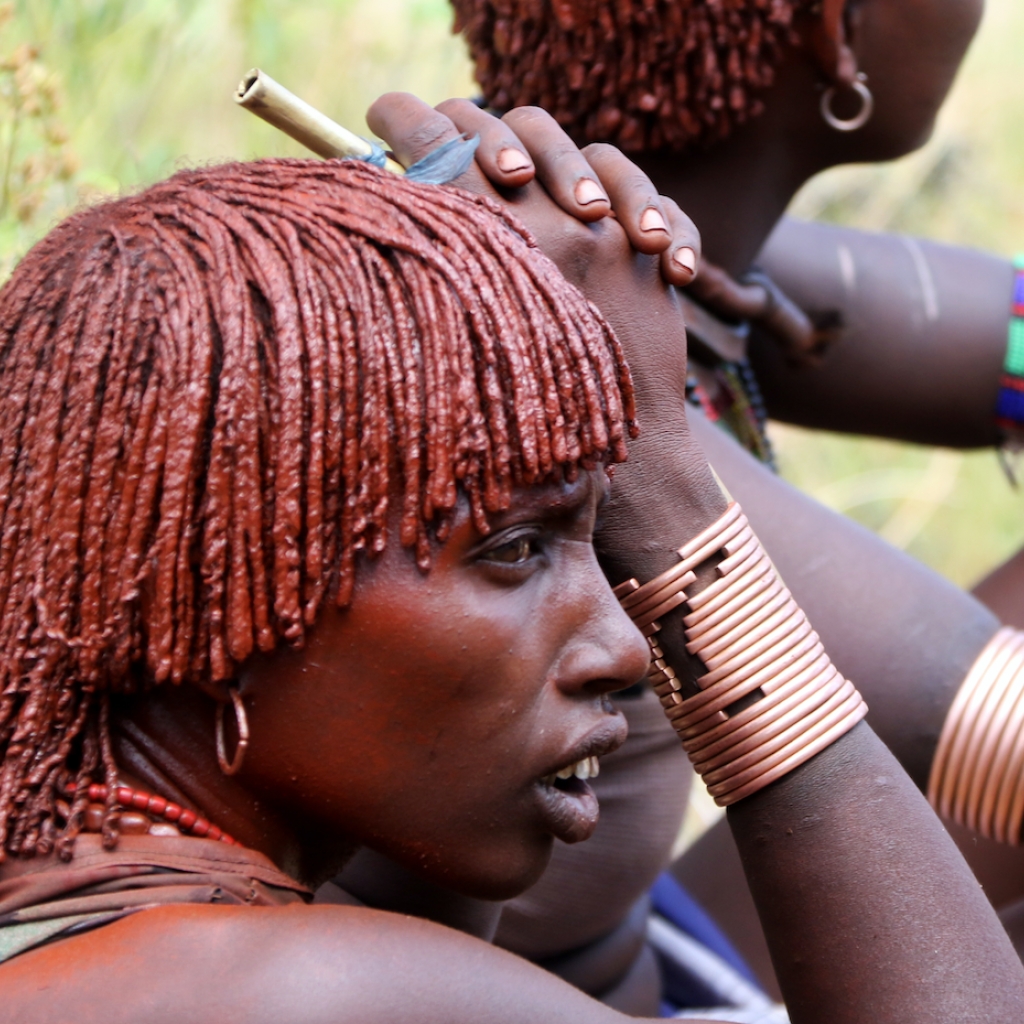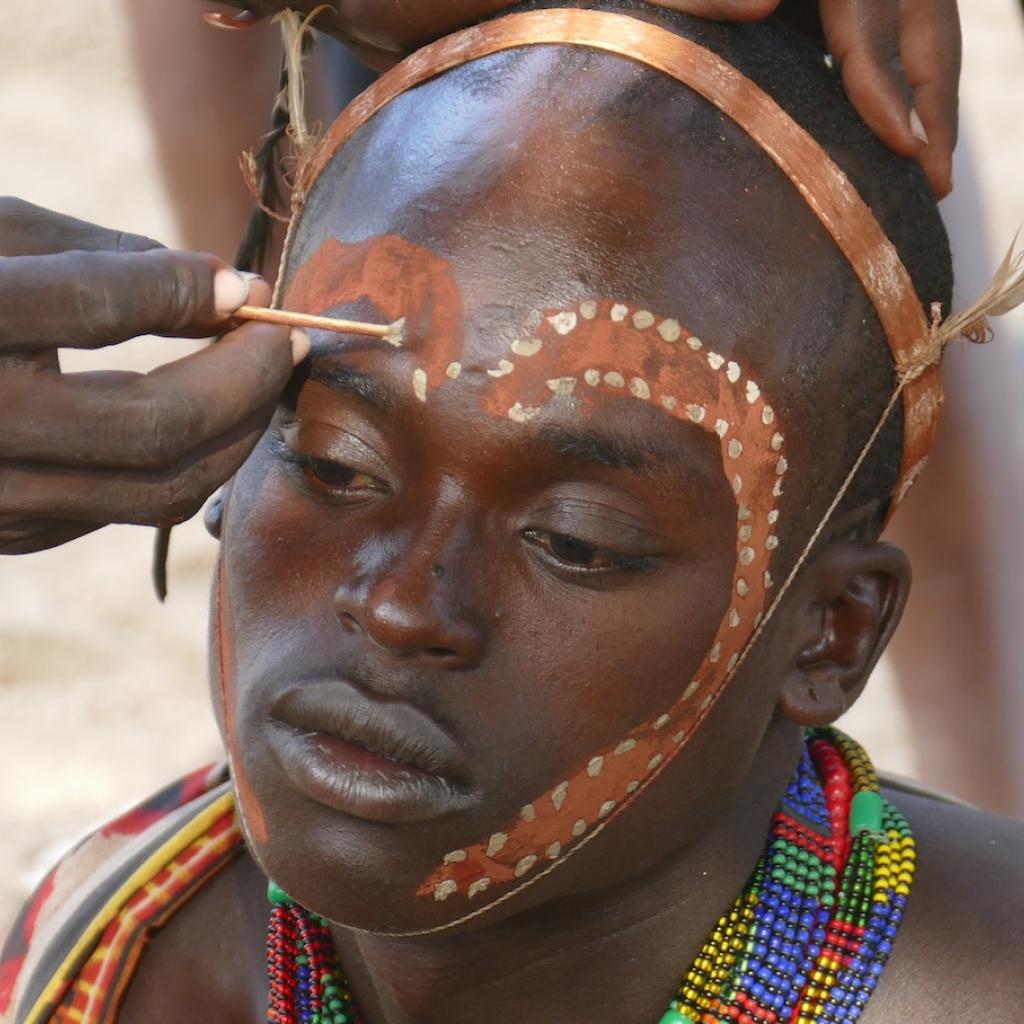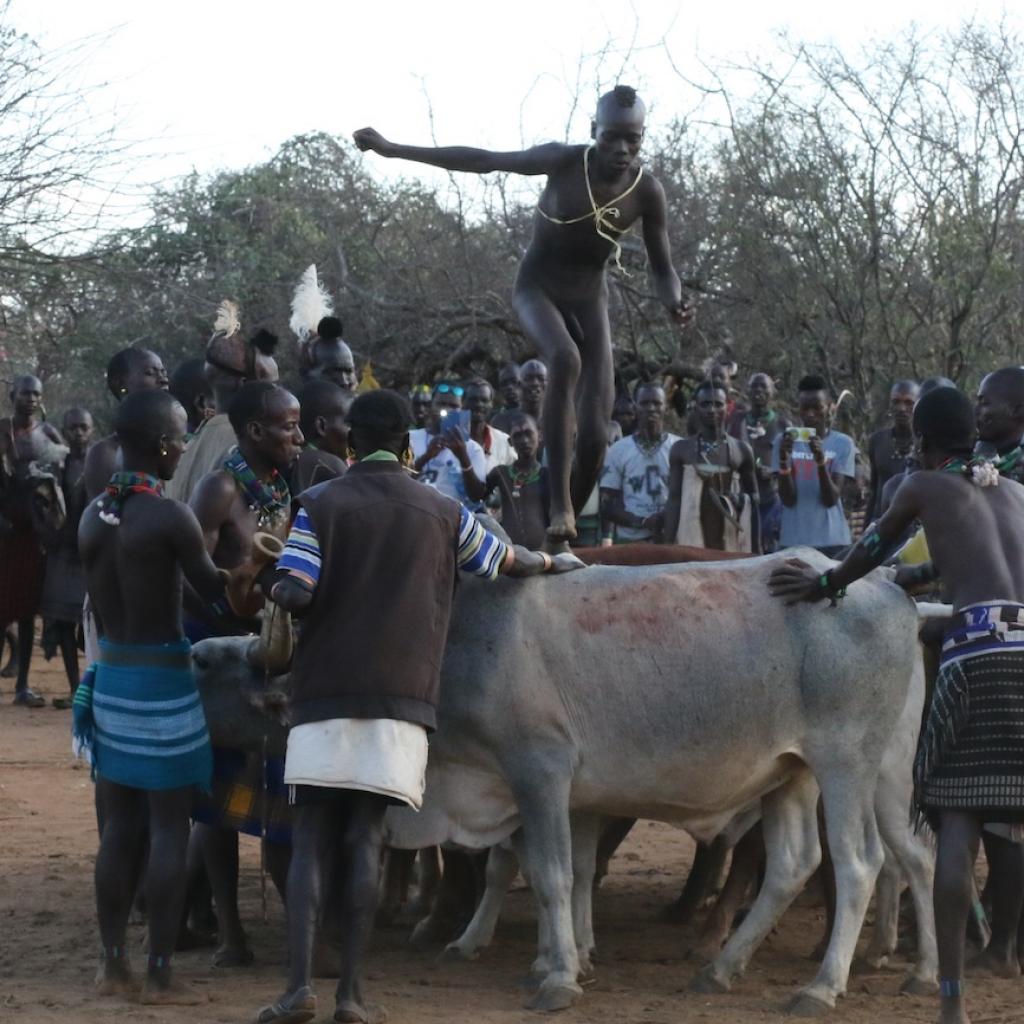The Hamar or Hamer inhabit the region which is located in the extreme South-West of Ethiopia, the region of the Lower Omo Valley, they are a population made up of about 25,000 individuals who live on agriculture and livestock.
The origins of the Hamer are not known, but some traditional narratives of this population say that the Hamer descend from the merger of some tribes who came from the North, East and West, all these tribes migrated South and settled in these places in the mountains North of Lake Turkana.
The first Europeans who came into contact with the Hamer brought diseases that were unknown and from which the Hamer were unable to defend themselves: smallpox caused many deaths among the Hamer while the cattle plague exterminated their herds.
Subsequently, the Ethiopian army, led by Menelik II, invaded Southern Ethiopia, clashing with the Hamer who, if on the one hand, were unwilling to submit to the new invaders, on the other, were not militarily prepared to face the power of the Ethiopian army; so even though they fought strenuously from their mountains, used as a fortress, many of them lost their lives or ended up in slavery.
These catastrophic events of the past changed the way of life of this population who became more individualistic and semi-nomadic.
Today the Hamer live in villages of families related to one another, each family has its own hut and if a man has married more women, each wife has her own hut where she lives with her children.
The Hamer huts are round and are simple constructions, made with a structure of wooden poles covered with straw, in the dry season, and mats in the rainy season.
Inside the village, the huts are arranged in a circle and inside it there is the fence where the cattle are enclosed and kept overnight.
Livestock are both an important source for survival and a status symbol; a man is richer the more cattle he has, moreover in order to marry he must pay a price to the parents of the bride quantified precisely in cattle.
Cattle are the main reason for the clashes with neighboring populations, the raids of animals often end in bloody gunfights, the AK47 are in fact very common in these areas and many men always carry them with themselves.
The Hamer grow almost exclusively sorghum, the cereal that is both consumed as food and used to make a local beer highly appreciated by the population.
For their cultivation, the Hamer depend on the abundance of rains during the wet season that fall on their territory.
The Hamer pay close attention and spend a lot of time taking care of their physical appearance, in particular hairstyles, both for men and women, are very elaborate and take a long time to be done.
Married women curl their hair in thin braids using butter and red ocher, the result is a very recognizable red bob and a sign of beauty and health; instead men make a sort of hood, using plaster and ocher, on which they insert feathers or other objects, this particular hairstyle lasts several months and symbolizes that the man killed an enemy or a dangerous animal.
Like many other populations in the Omo Valley, the Hamer also use the practice of scarification to make their body more attractive to the opposite sex.
The Hamer clothing is rather minimal, the men wear a sort of short skirt and a stole on the shoulders but carry their inevitable AK47 with them; the women instead wear goatskin skirts enriched and decorated with colored beads and cowrie shells.
The Hamer follow the traditional religion, they believe that natural objects, such as rocks, trees, etc., have a spirit and that there are spirits capable of assuming human or animal features capable of exerting a supernatural influence on people.
In the Hamer society there are a series of rituals and rites of passage that mark people's lives, in fact there are rites for the birth and death of a person, but the most known ritual that is identified with this population is the rite of passage that the boys face to pass to the adult phase: the jump of the bull.
The jump of the bull consists of a test of strength and ability that the initiates must pass in order to enter the adult phase and be able to marry.
Young people must complete a series of preparatory stages that will lead them to the final event consisting in jumping and running on the backs of a row of bulls without ever falling.
They must repeat the jump and run for a minimum of 4 times, running on a row of at least eight bulls, but each boy can decide to add more bulls or to repeat the jump several times to demonstrate his strength and ability.
On the day of the ceremony the women, related to the young man who will have to take the test, sing, dance and play trumpets of iron reaching a sort of trance state; this state of thrill serves to face a test of loyalty towards their family towards the initiate: the girls get whipped on the back to show their devotion.
In the territory inhabited by the Hamer there are several weekly tribal markets, here you can meet women who come to buy or sell some products, or, in a well-defined place of the market, you can see men and women having fun drinking sorghum beer.
